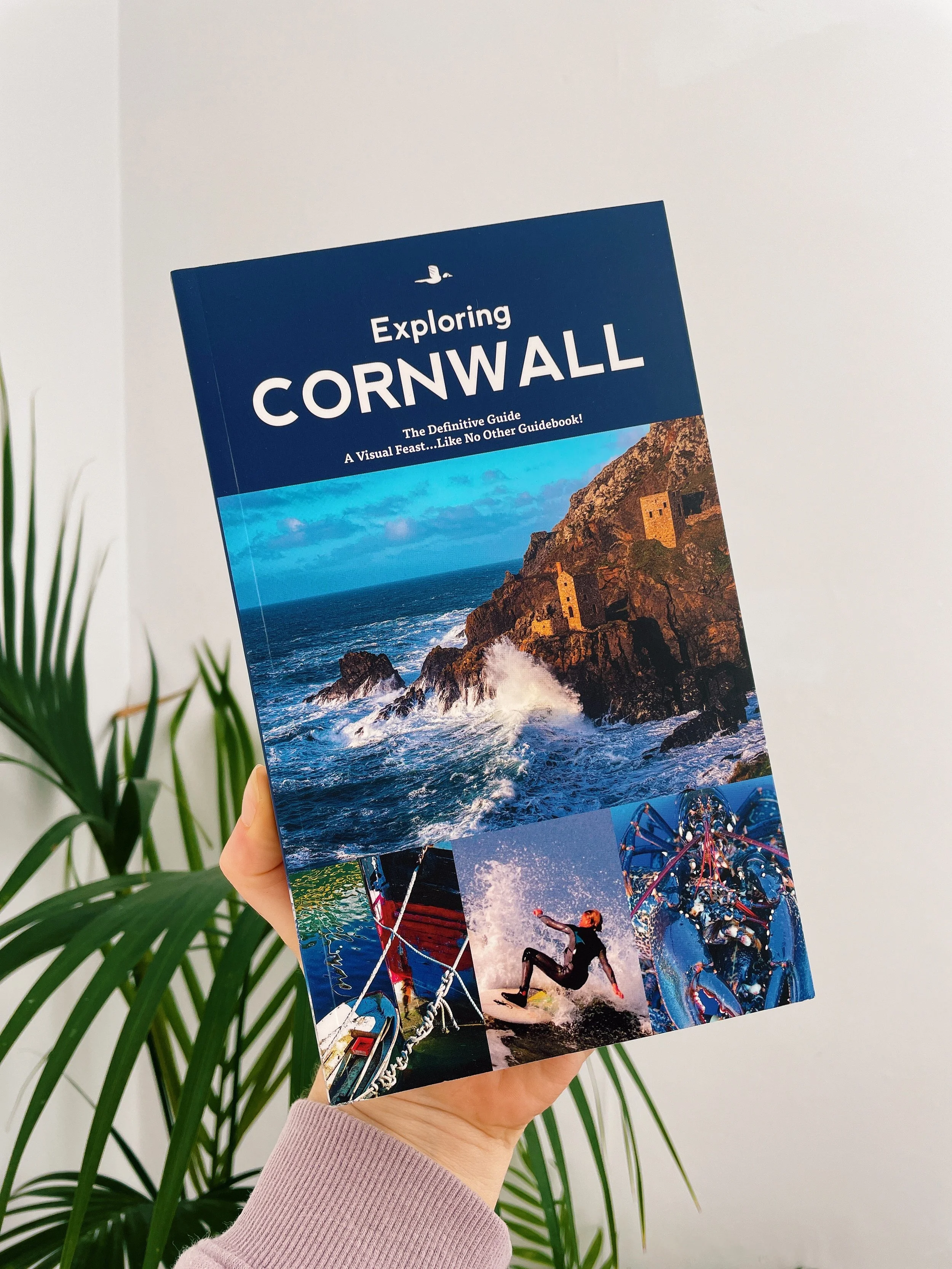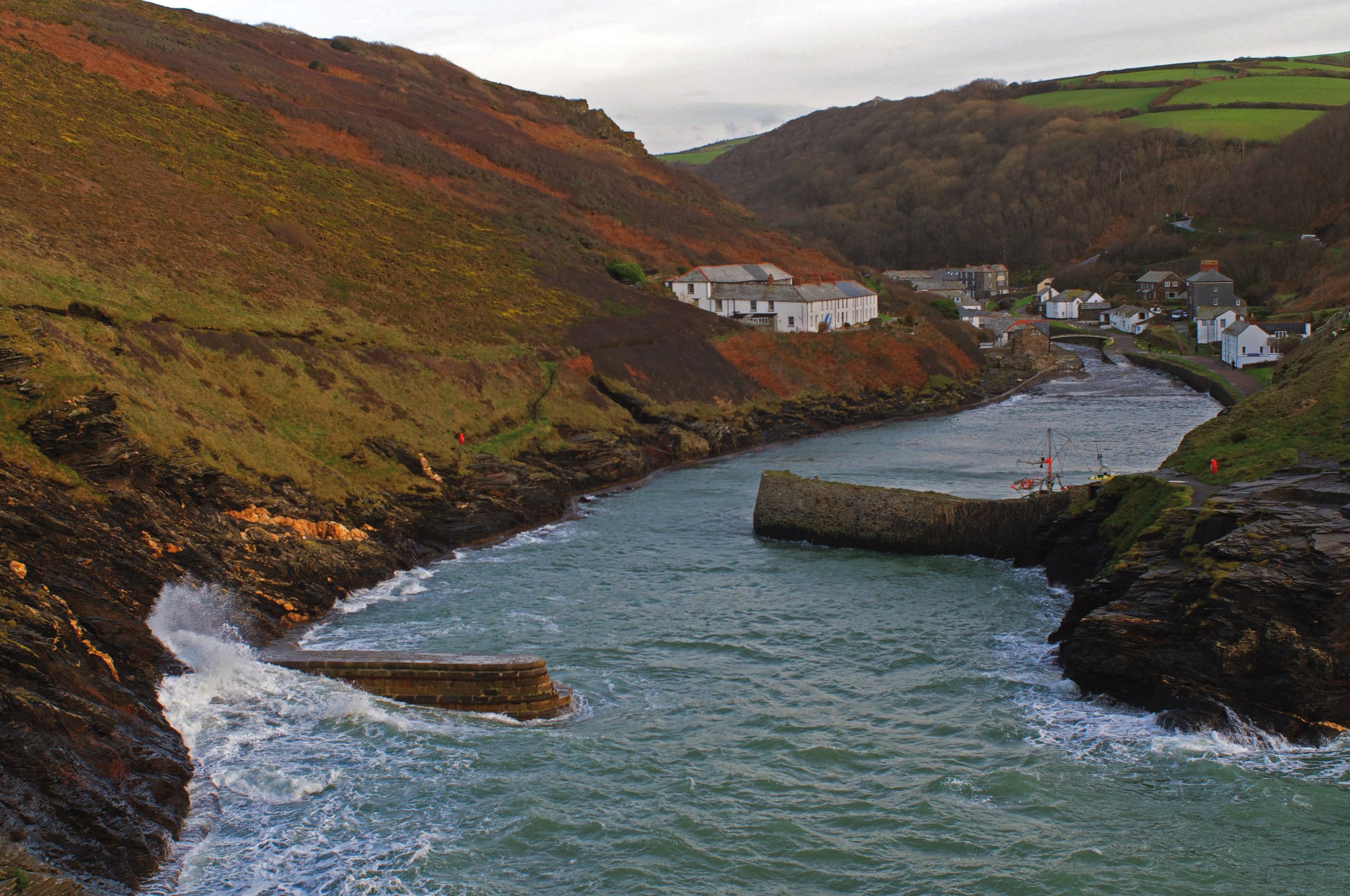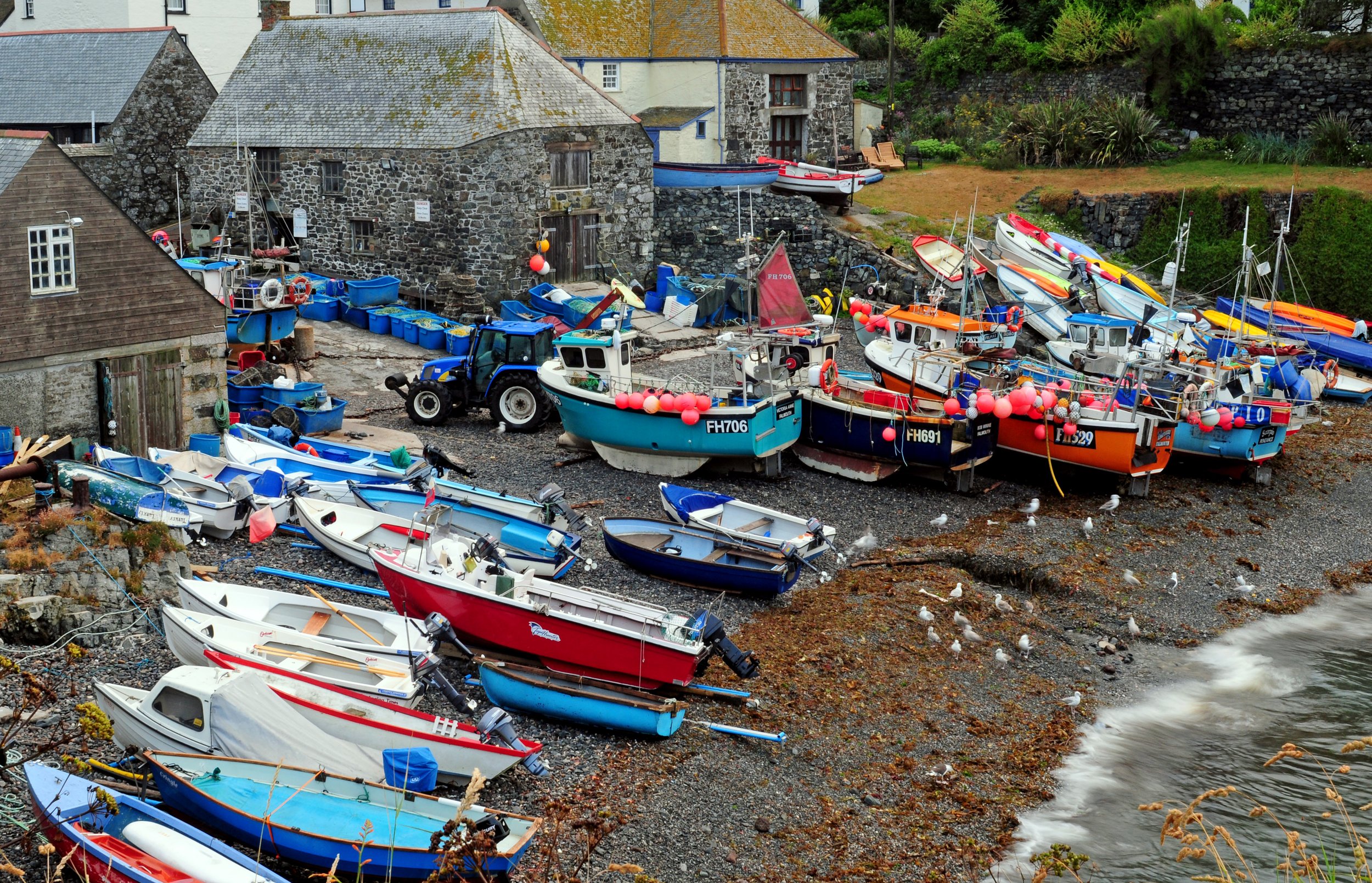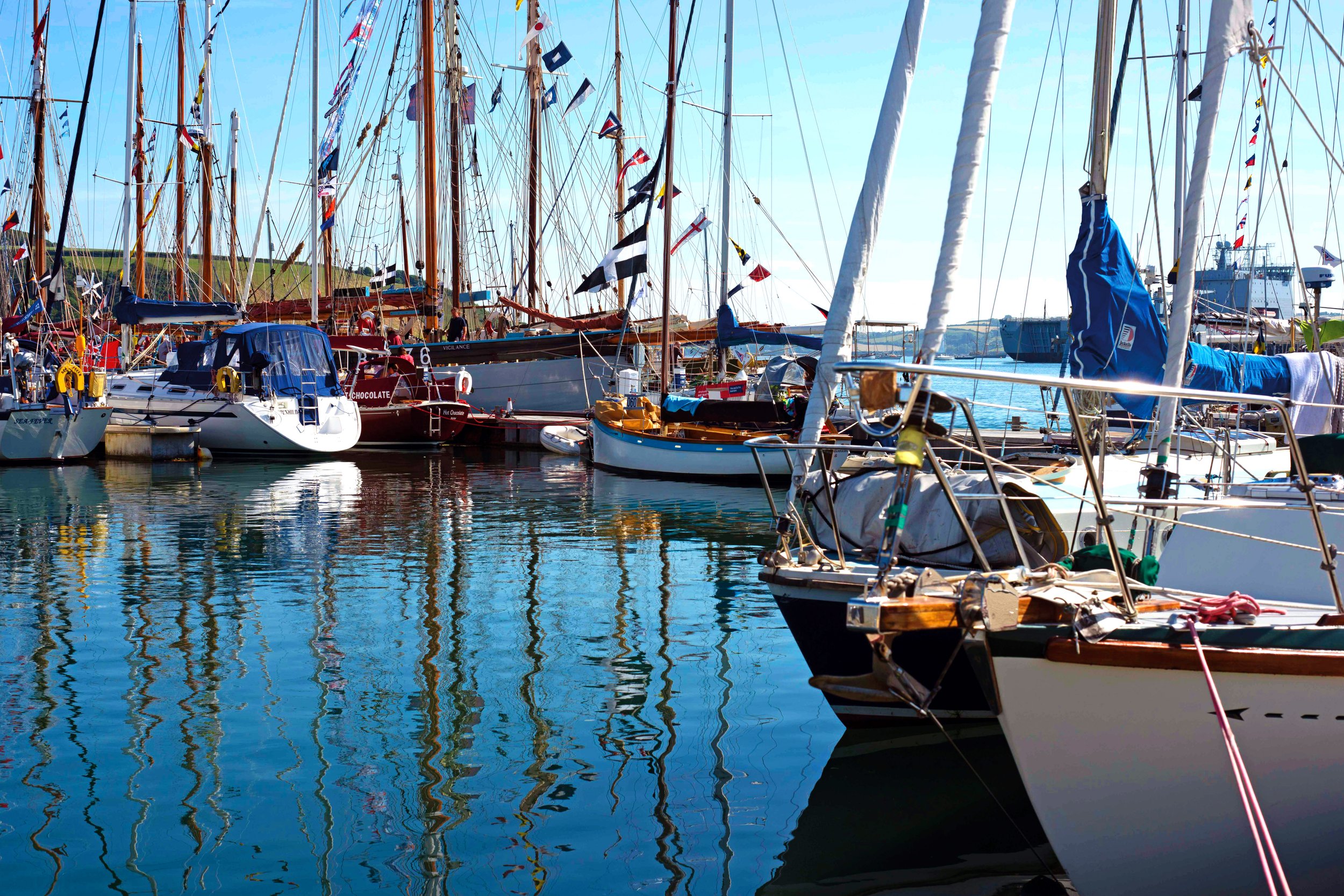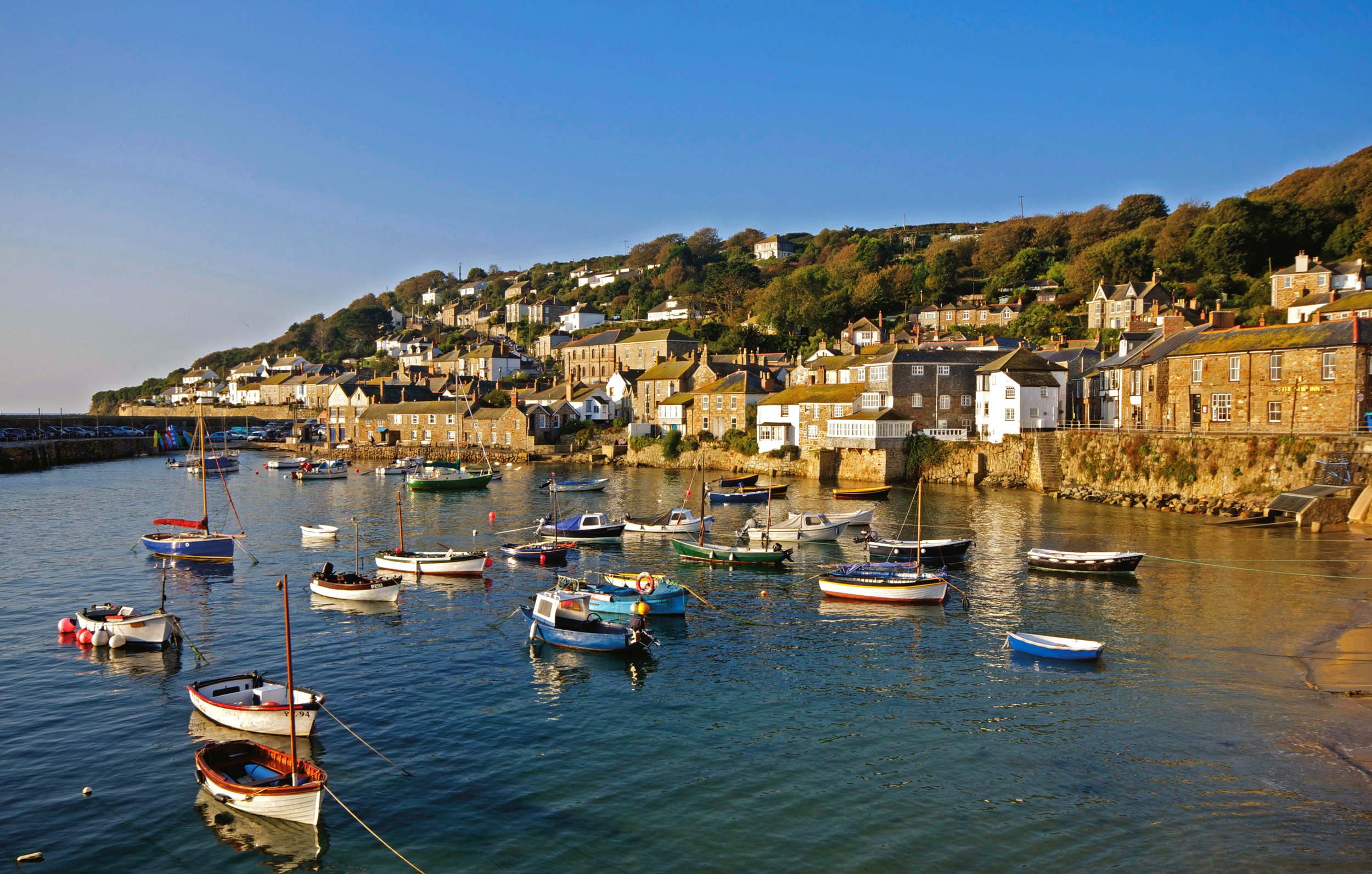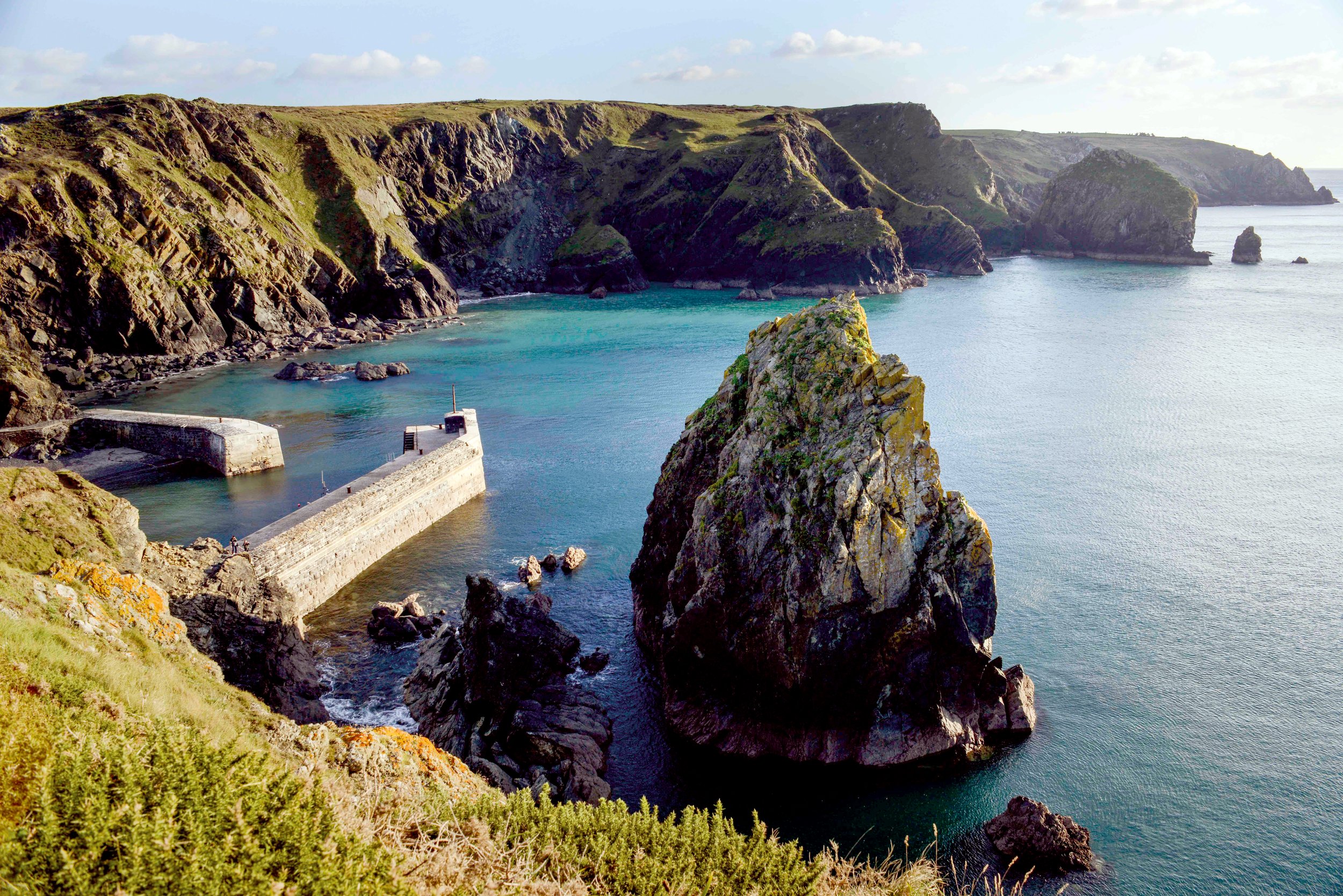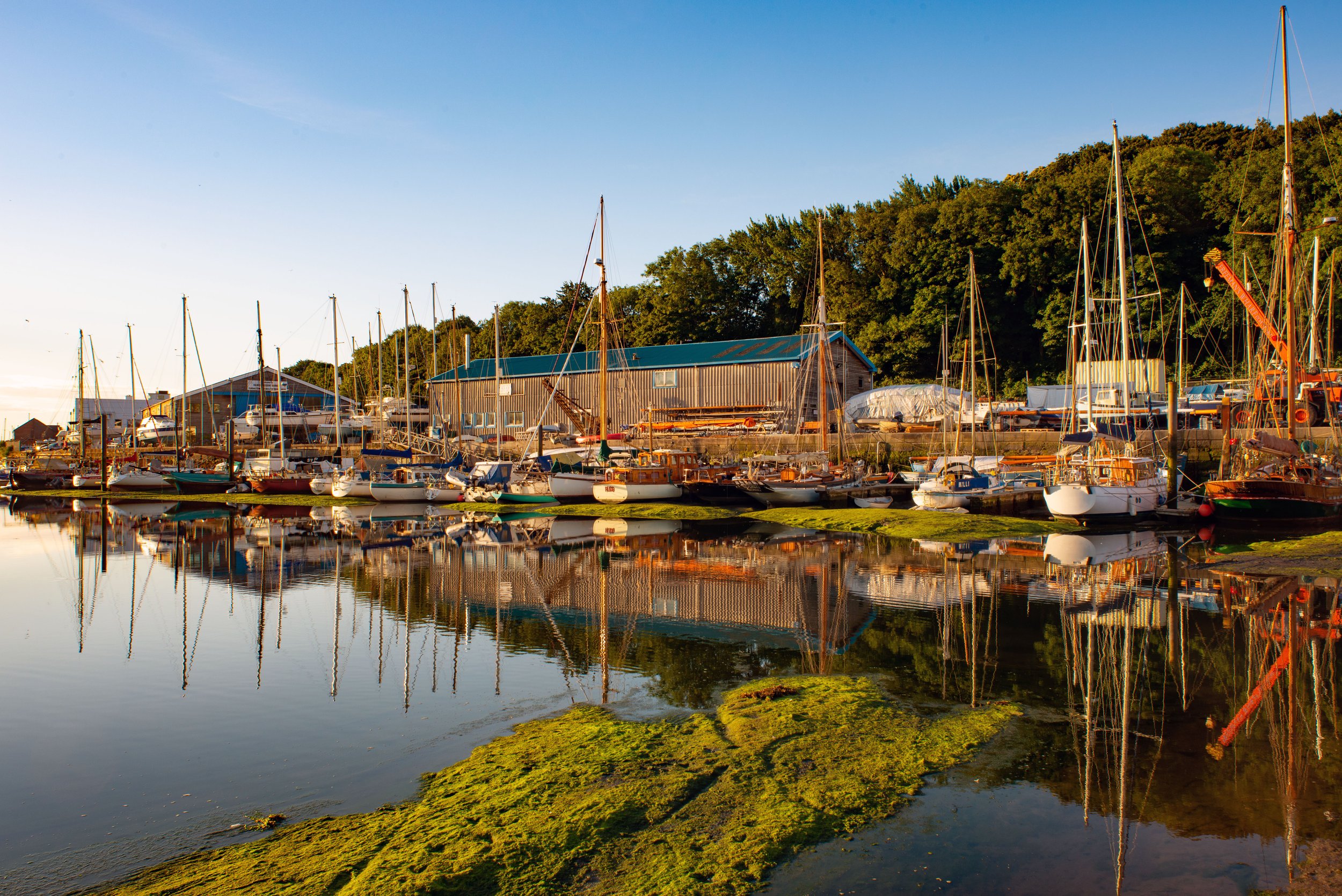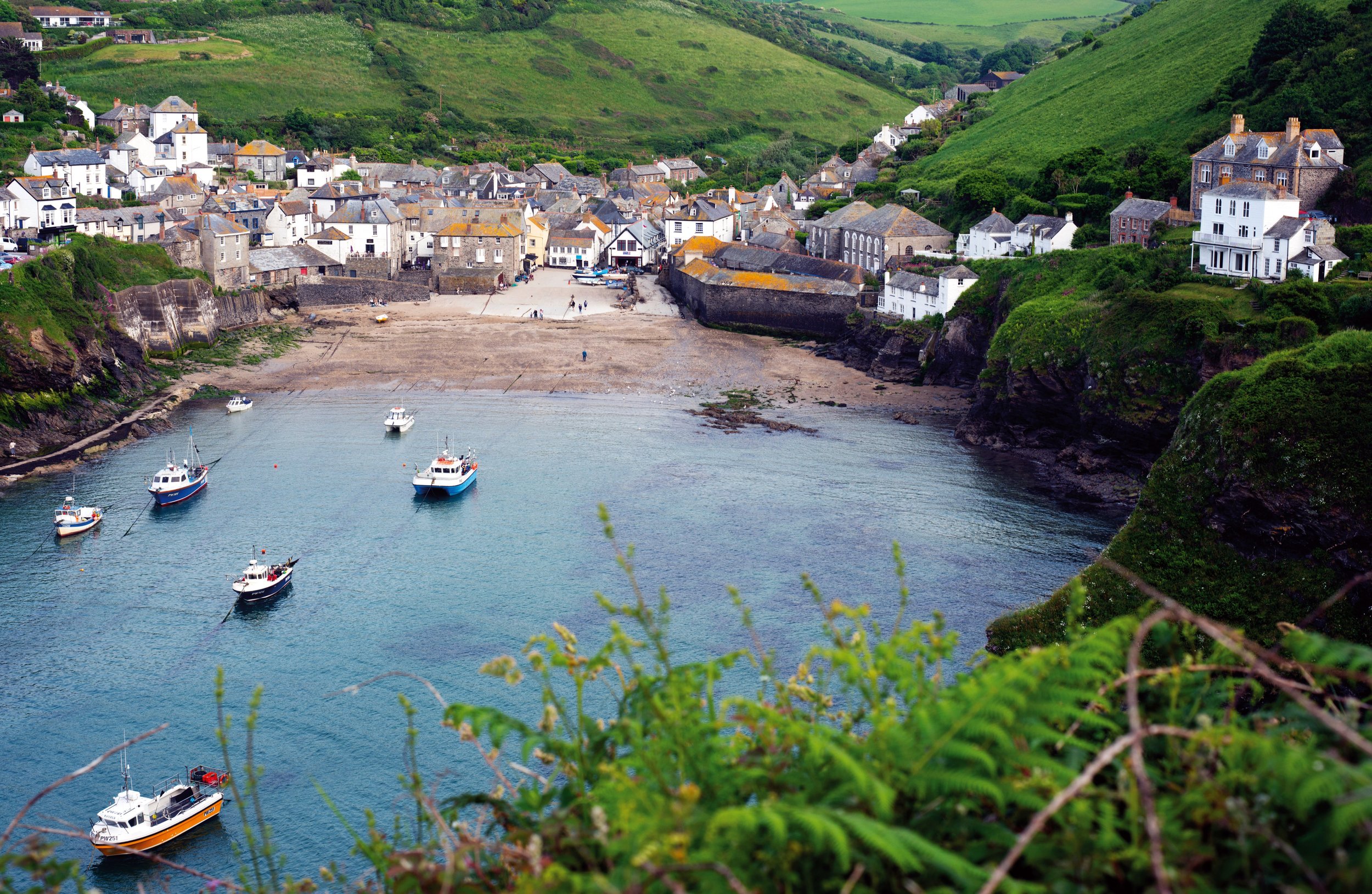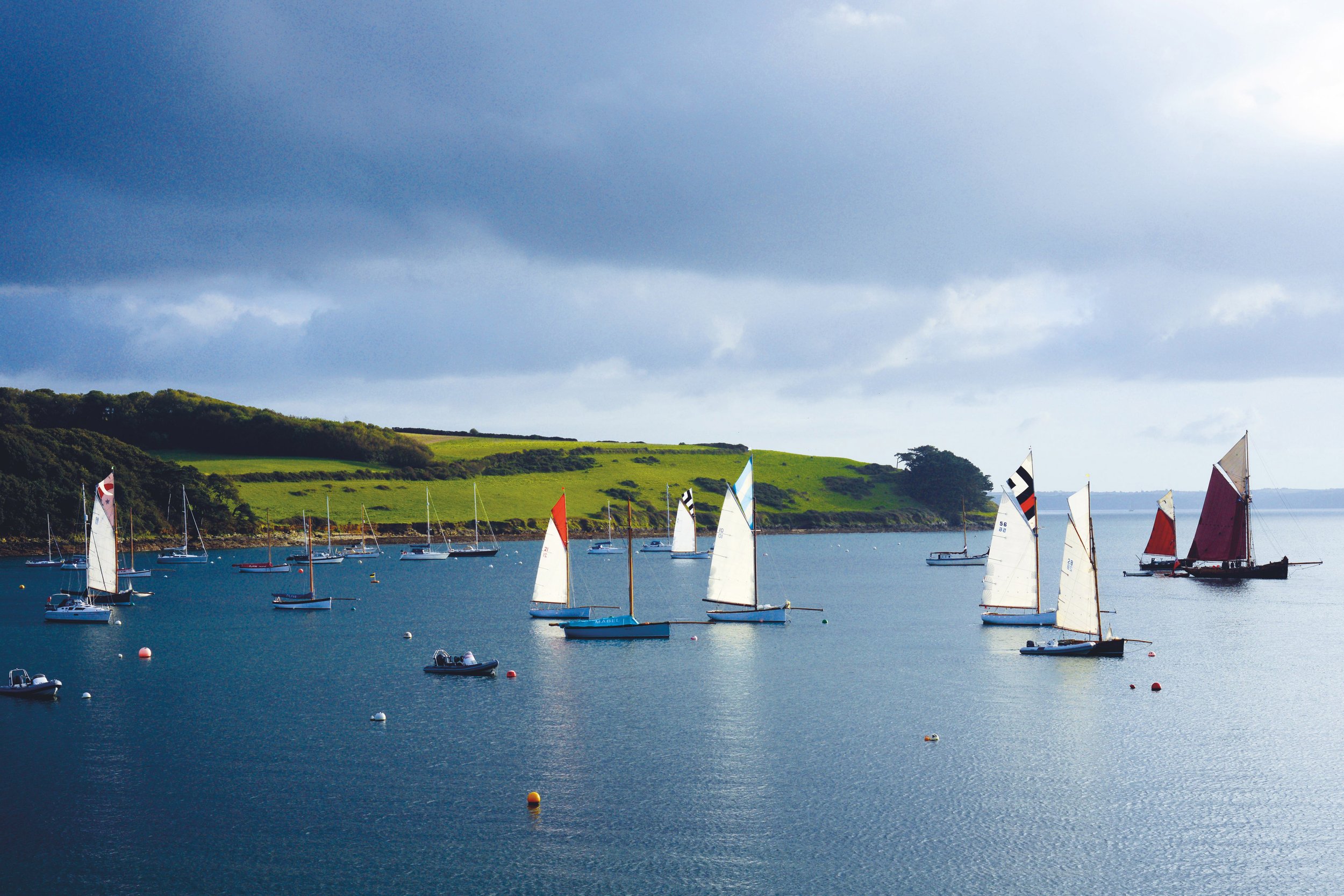Cornwall's Top 20 Prettiest Harbours
The harbour, along with the beach, is the iconic image one associates with Cornwall. For fishing and living off the sea has been fundamental to Cornish life. From the single Cadgwith fisherman to the rows of deep sea trawlers at rest in Newlyn. For thousands of Years the Cornish have traded with the Phoenicians, Romans and European nations. Tin, granite and mining engineers have left these ports and harbours for distant lands. Traders and their crews have been welcomed. Indeed, the Cornish hospitality and generosity to the many foreigners was universally acknowledged. For in Penryn during the Middle Ages there would have been three hundred boats moored on either side of the High Street where you could listen to a multitude of languages: Cornish, Breton, German, Russian, French, Dutch...rarely English. Today, is it any wonder that the holiday maker is so graciously welcomed?
Boscastle
An Attractive village within a steep valley, leads down to a sinuous and dramatic harbour—a safe haven on a treacherous coastline. In 2004, featured in the national news following the horrific flooding on the 16th August where cars and caravans were swept into the sea. Houses and shops were destroyed. The Royal Naval helicopter squadron from Chivenor, North Devon was magnificent in their efforts to save life and limb.
Cadgwith
Thatched cottages of green serpentine rock, boats beached on the shingle cove create a romantic scene. Haunt of artists. Superb coastal scenery.
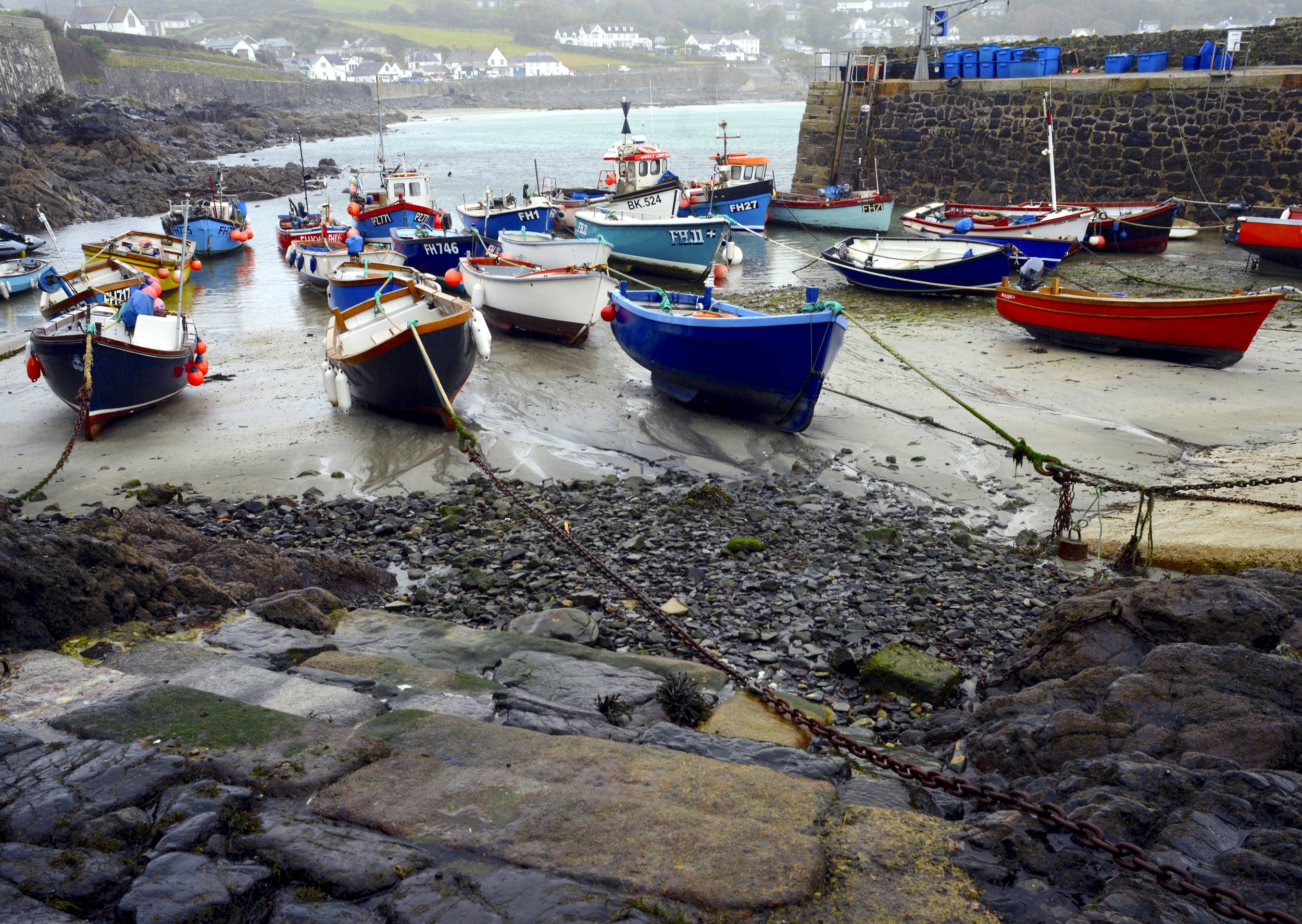
Coverack
A charming picturesque old fishing village and former smuggling centre given to bucket and spade holidays. Small harbour. Cafes.
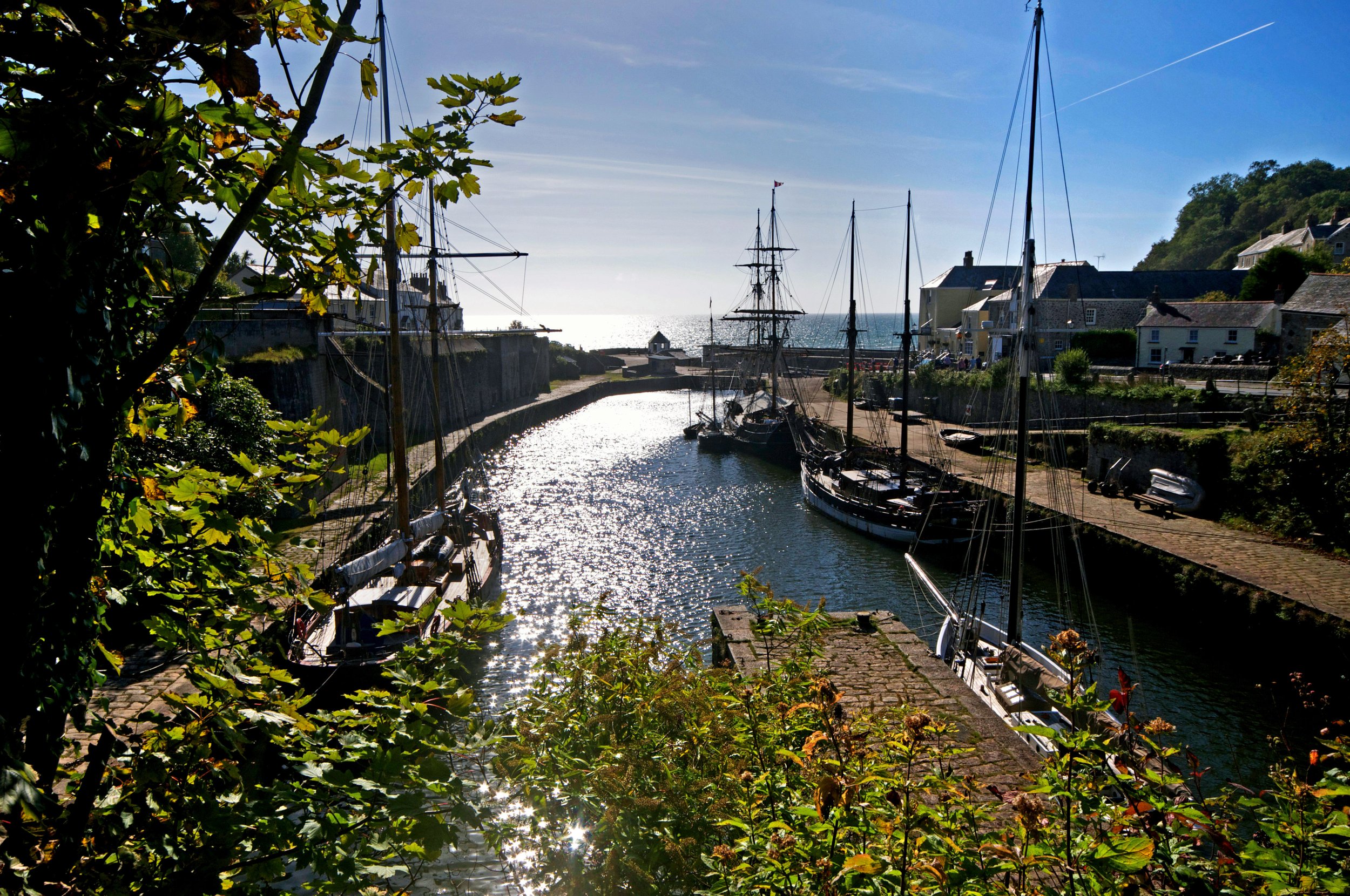
Charlestown
There’s a nostalgic atmosphere about this C18 port built by Charles Rashleigh. Still a busy exporter of china clay. Shipwreck and Heritage Museum*, Diving centre. Often used as a location for TV/Films; Onedin Line, Longitude, Poldark, Rebecca and Rosemary Pilcher’s novels.
Falmouth
This is one town where it is best to arrive by sea to appreciate its position. If you arrive by car, park by the harbour and walk up the narrow high street; galleries, organic foodies, tea rooms. Don’t miss the Old High Street, the coolest place in town. The new university at Penryn Campus has brought youthful exuberance to the town. The Phoenicians and Romans came here in search of tin. In the late C16, Sir Walter Raleigh persuaded the Killigrew family to develop the harbour’s potential and for 200-years it became the centre of the Mail Packet Trade, smuggling and piracy. Today, popular with dinghy sailing and yachtsmen. Pendennis Castle, Maritime Museum, Art Gallery, cinema, 3-beaches. Regatta Week - mid Aug.
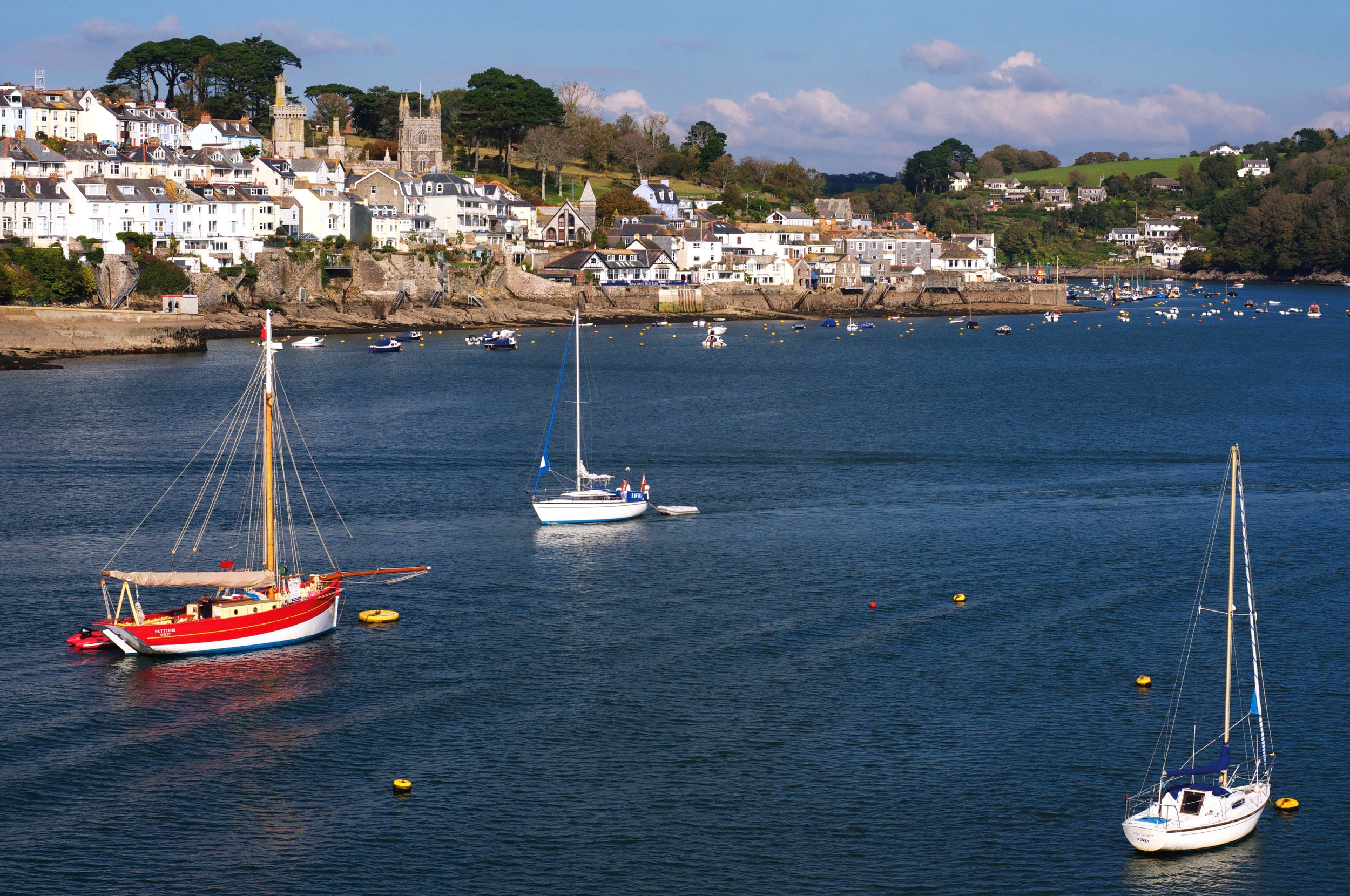
Fowey
Pronounced Foy. A chic and fashionable town of narrow streets, brightly coloured houses that overlook a natural harbour. A haven for yachtsmen, a commercial seaport and town with many pubs, delis, restaurants and galleries. This was one of England’s busiest towns in the Middle Ages. Home of the ‘Fowey Gallants’, a bunch of reckless and invincible pirates who raided French and Spanish shipping. Today, a busy exporter of China Clay for you may witness the large ships delivering their cargo. Aquarium Fishing trips and passenger ferry to Polruan. Royal Regatta & Carnival week - Aug (2/3 week).

Looe
You may believe you to be in a time-warp. Looe is an active and scruffy Cornish fishing village with a bustling quay, tidal harbour and a web of narrow streets that provide an unforgettable tableaux of Cornish life. It has gift shops and the smell of chip batter. However you can buy fresh fish collected off the boats that morning, or you can walk the Looe Valley Line where a number of way-marked trails lead off along 8-miles of railway track, from Looe to Liskeard. Embarkation point for deep-sea fishing trips. Fish market on East Looe Quay. Sub-Aqua Club.
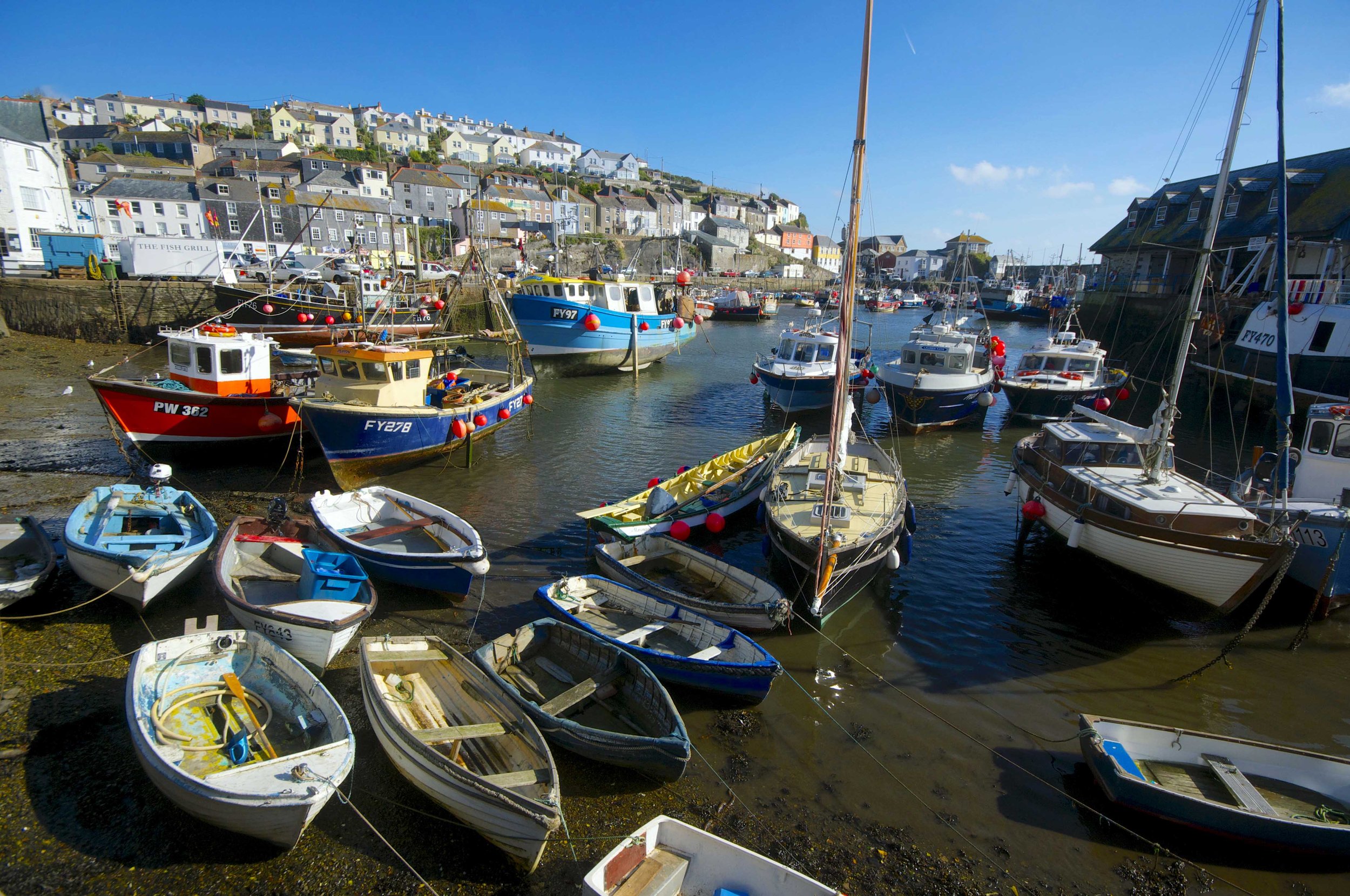
Mevagissey
One of Cornwall’s most picturesque and unspoilt fishing villages. The fine inner, and more recent outer, Harbour have been at the centre of the town’s history. The Phoenicians and Romans traded here. Shark fishing centre, World of Model Railways, Folk Museum and Feast of St Peter - June (last week).
Mousehole
Pronounced ‘Mouzel’. The least spoilt of all Cornish fishing villages. Stone cottages huddle around the harbour facing east sheltered from the prevailing winds. Wander the streets and discover art galleries and special
eateries, and if in need of a rest, sit on the harbour wall and watch a time capsule of Cornish life. Originally called Port Enys when it was sacked and burnt down by Spanish privateers in 1595. Fishing trips, carnival - Aug (2nd/3rd week).
Mullion
A busy village and centre for much of the Lizard Peninsula. There is a splendid church, some popular pubs and cafes, an active cricket club and an award-winning school. The one-way system will draw you in, dismiss you but first bear left, and make your way down to the Cove. The beaches close to, Poldhu and Polurrian, are often empty but for a local dog walker.
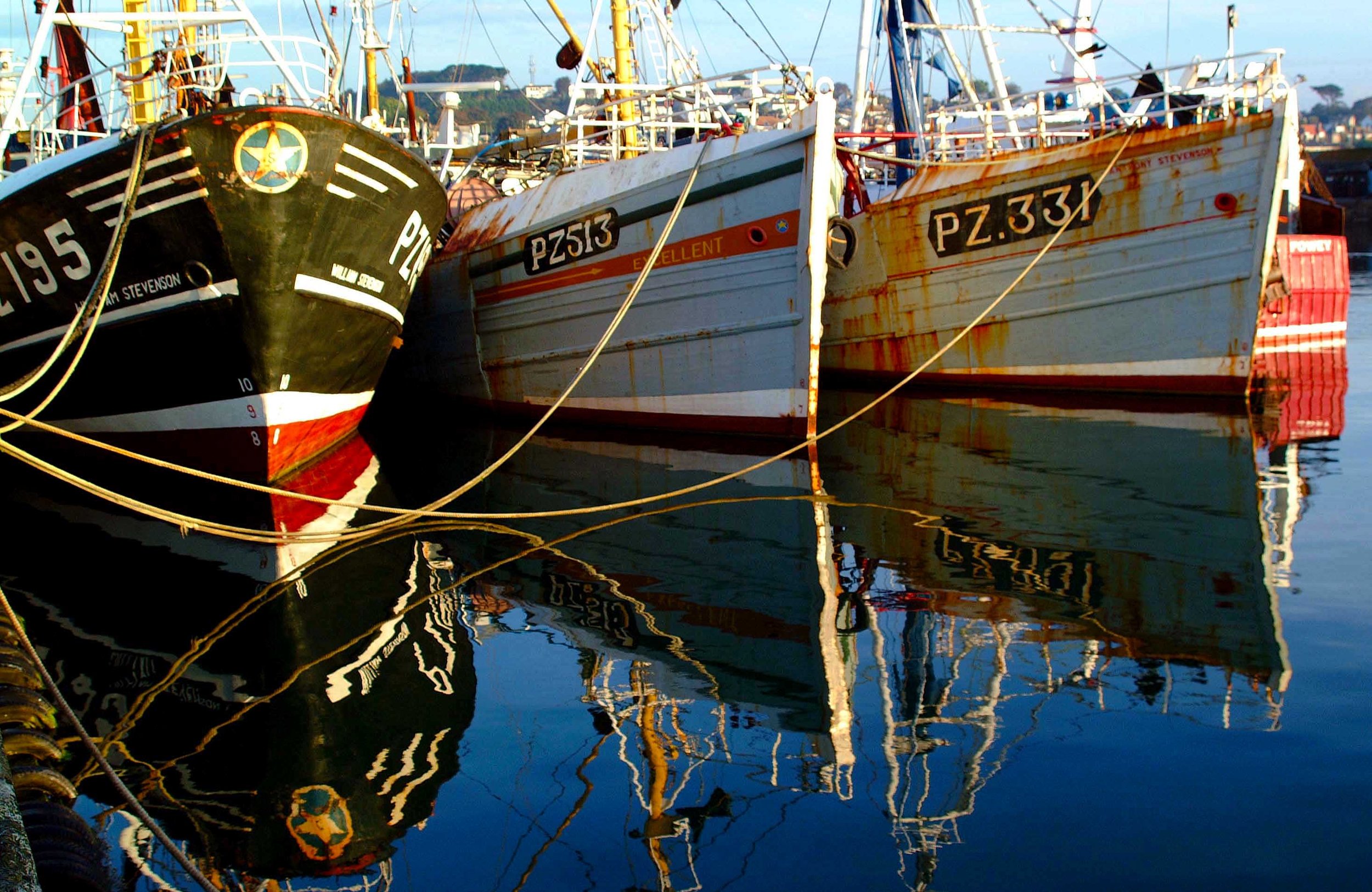
Newlyn
Home of Cornwall’s largest fishing fleet where at day break the lively fish market is in full voice. The medieval quay is a delight. Like St Ives, a favourite haunt for artists - Edwardian painters came, and left much work behind. Much was destroyed by Spanish Raiders in 1595 and by the Penzance Council in 1937 when 85% of the fisherman’s cottages were pulled down. Art Gallery. Fresh fish and shell fish merchants, aplenty. The pubs tend to be patronised by thirsty trawler men. If you can cope with that you may experience something new.
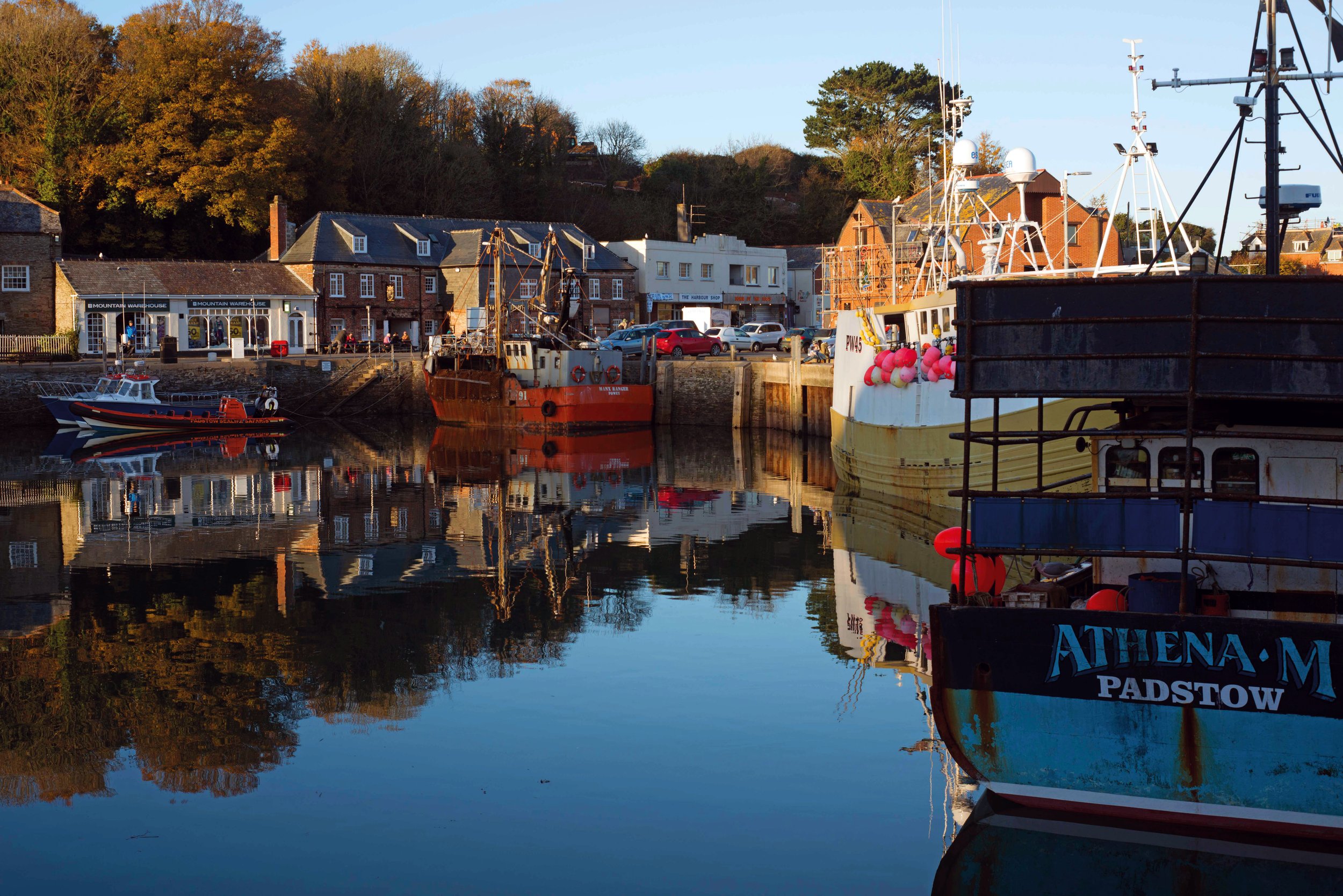
Padstow
A labyrinth of narrow alleyways, picturesque houses and a safe haven on the treacherous North Coast. May Day heralds the arrival of the Padstow Hobby Horse ‘Obby ‘Oss who prances and dances the streets taunting young and not so young maidens - a celebration of spring fever and the coming of summer. C16 Raleigh’s Court House on South Quay. C15 church. Boat trips. Centre of fine cuisine with many restaurants notably Rick Stein’s various enterprises. It is worth walking away from the crowded harbour, and exploring the side streets, or heading out for the coastal footpath to the nearby beaches. The Camel Trail starts here and you can hire a bike from one of the hirers located beside the car park at the bottom of the hill.
Penryn
An attractive town with a picturesque main street of handsome Georgian houses situated at the head of Penryn Creek. Granted a Charter in 1236 from whence Glasney Abbey was built, since destroyed by Henry VIII. In the C17, England’s busiest port after London. In the C19, the export of granite began which built New Scotland Yard, four London Bridges and the Fastnet Lighthouse. The home of the Penryn Campus at Tremough, the new University and Art College buildings of the Universities of Falmouth & Exeter. Museum. Town Fair - Aug BH W/E. Eateries on Commercial Road.
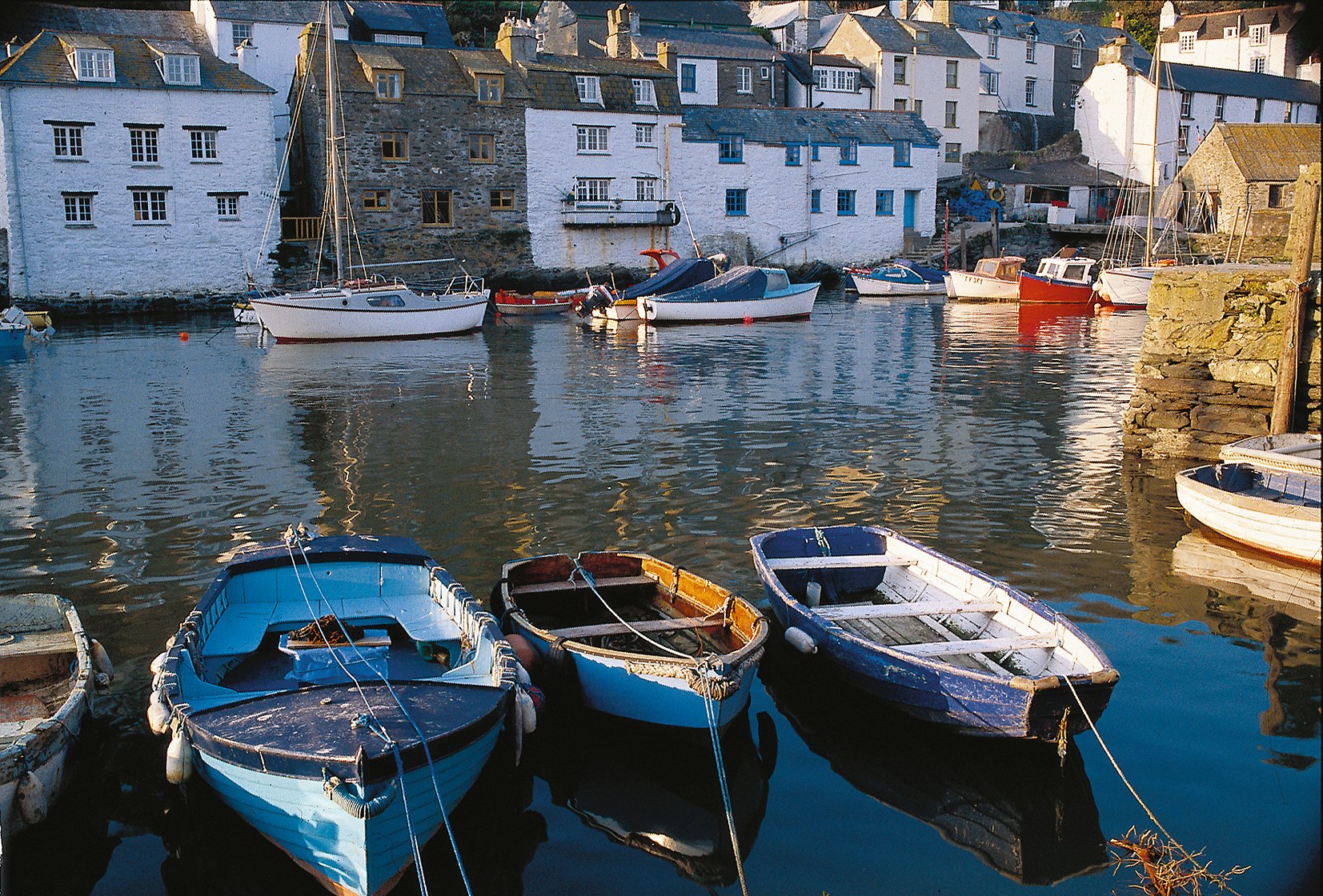
Polperro
The quintessential and “Pretty As A Picture” idyll of a Cornish fishing village. It is picturesque, a timeless ambience pervades the narrow streets, pastel-shaded cottages and colourful harbour. It can be crowded during the day. Best visited in the evening where you can enjoy a pint at the Blue Peter Inn or if in luck, listen to the Fisherman’s Choir. Model Village and tea/gift shops. Fishing trips and Regatta; mid-July.
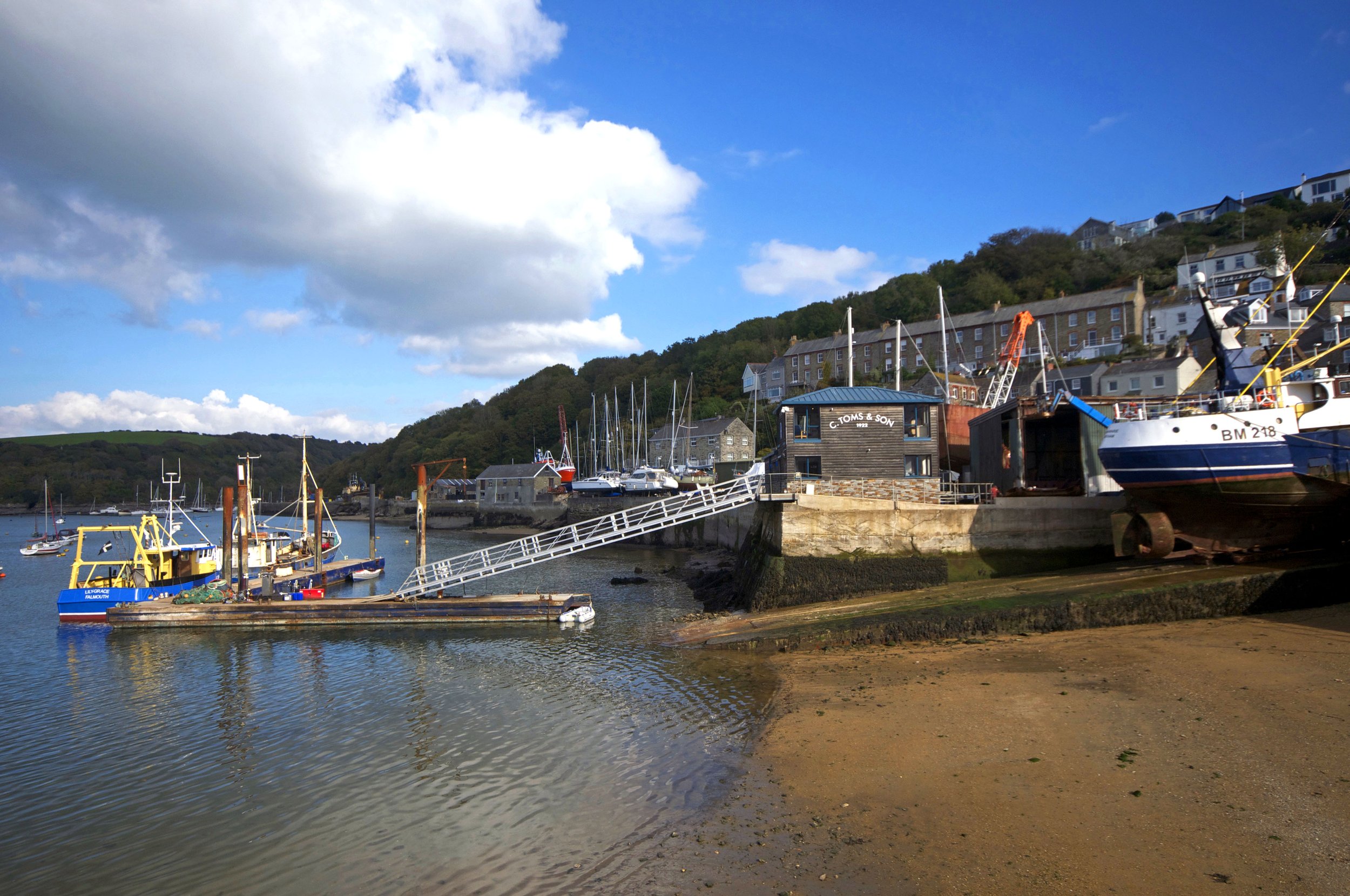
Polruan
An attractive village with a busy boatyard. The main street plunges almost vertically to the small quay. Cars not encouraged. Superb views from the hill top car park. Worth the excitement of taking the pedestrian ferry to and from, Fowey. The coastal walks are quite flat and re-assuring.
Port Isaac
The steep street runs down to a little harbour, hazardous when a northerly wind blows. Lobster fishing centre. Trips for mackerel, pleasant inns and parking (charge) on beach at LT. Pottery. Fresh fish merchant. Known throughout the World as the location for Doc Martin, and the films, Fisherman’s Friend and Saving Grace. St Endellion Music Festival - Aug.
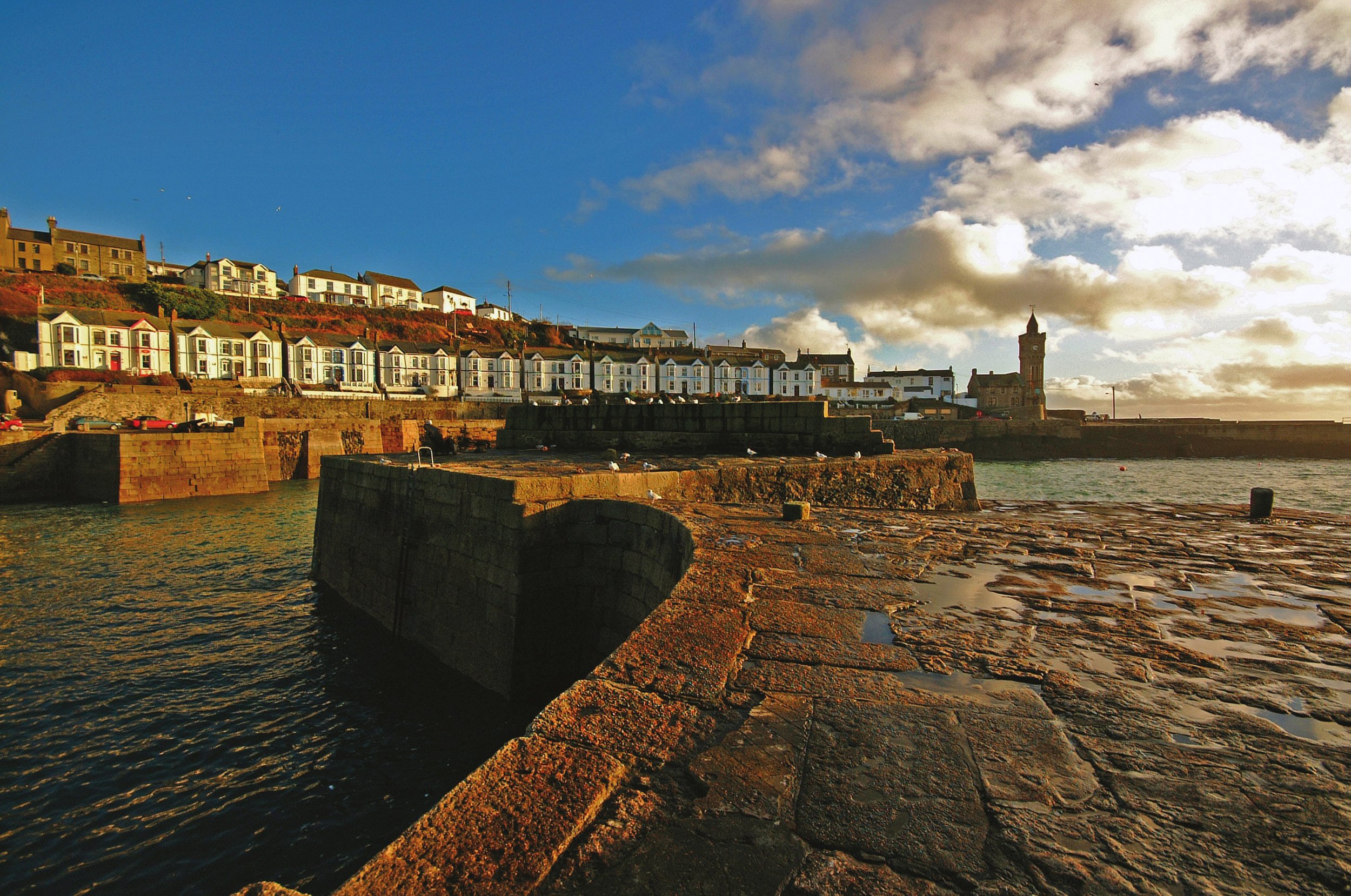
Porthleven
Attractive harbour with a shipbuilding yard, C19 Harbour House and an imposing Wesleyan chapel c.1890. The vulnerable harbour faces south-west and was built for the mining industry in 1811. A south-westerly gale in 1824 washed it away, to be later rebuilt in 1855, with lock gates. Serious surf reef off the Harbour wall. Cafe culture and eateries pervade.
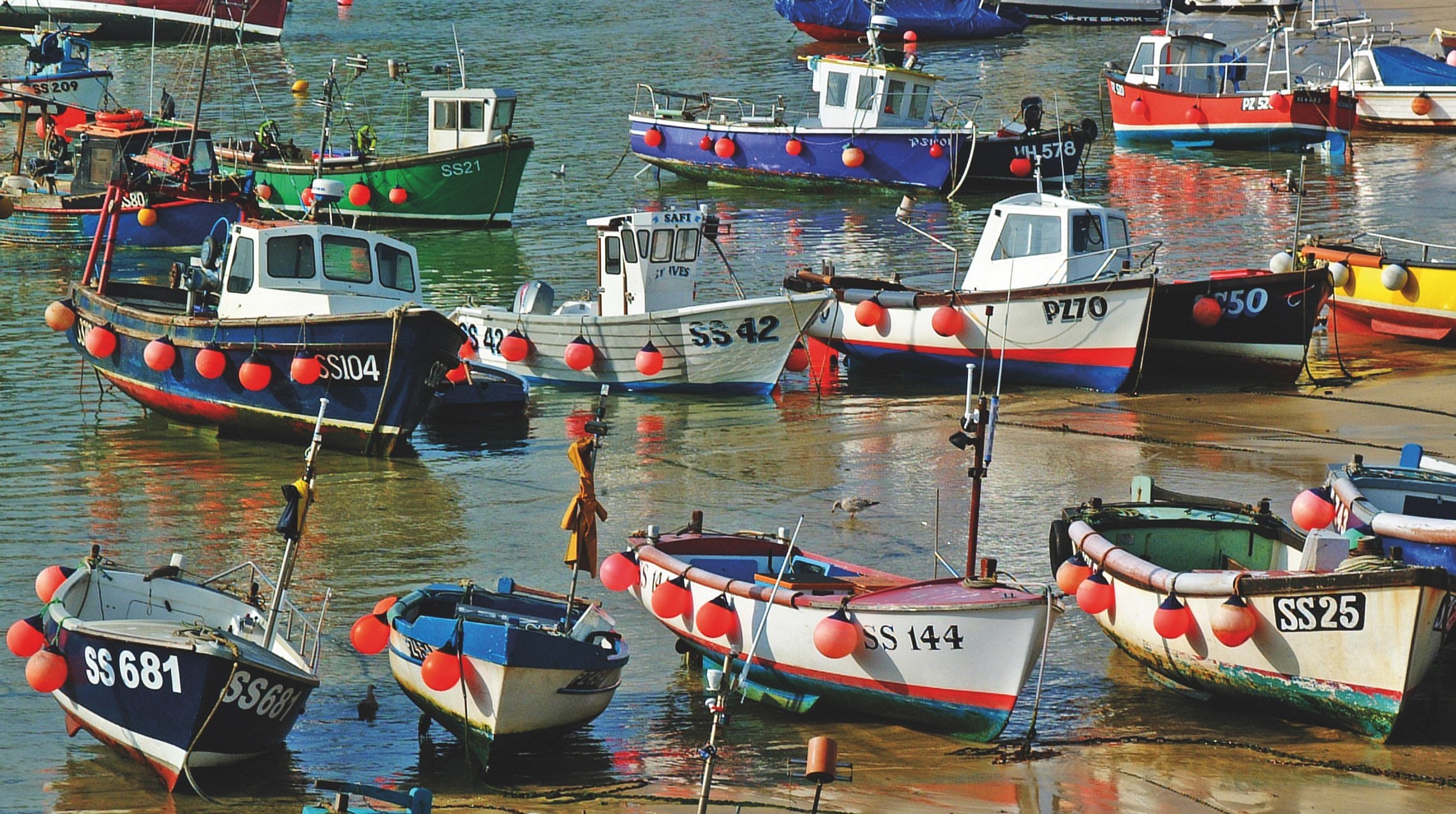
St Ives
A labyrinth of narrow streets, whitewashed cottages, brightly coloured boats and sandy beaches so bright, piercing and clear, you could be forgiven for believing you were in the Med. In the C19 and C20 the light drew in the early painters. The sea has a magical, turquoise colour. Today, very much the southwest’s centre for contemporary arts and crafts, and a centre for fine cuisine, especially seafood. Its charm remains despite the thousands who flock
here. It is a special place worth exploring and you never know you may benefit from one of the art courses on offer. Barbara Hepworth Museum, Leach Pottery, Tate St Ives. Music & Arts Festival - Sept.
St Mawes
An affluent village popular with dinghy sailors and yachtsmen which in summer takes on a Mediterranean atmosphere. The main centre for the beautiful Roseland Peninsula and home to the Hotel Tresanton, set in an enviable position and worthy of your attention. Castle.
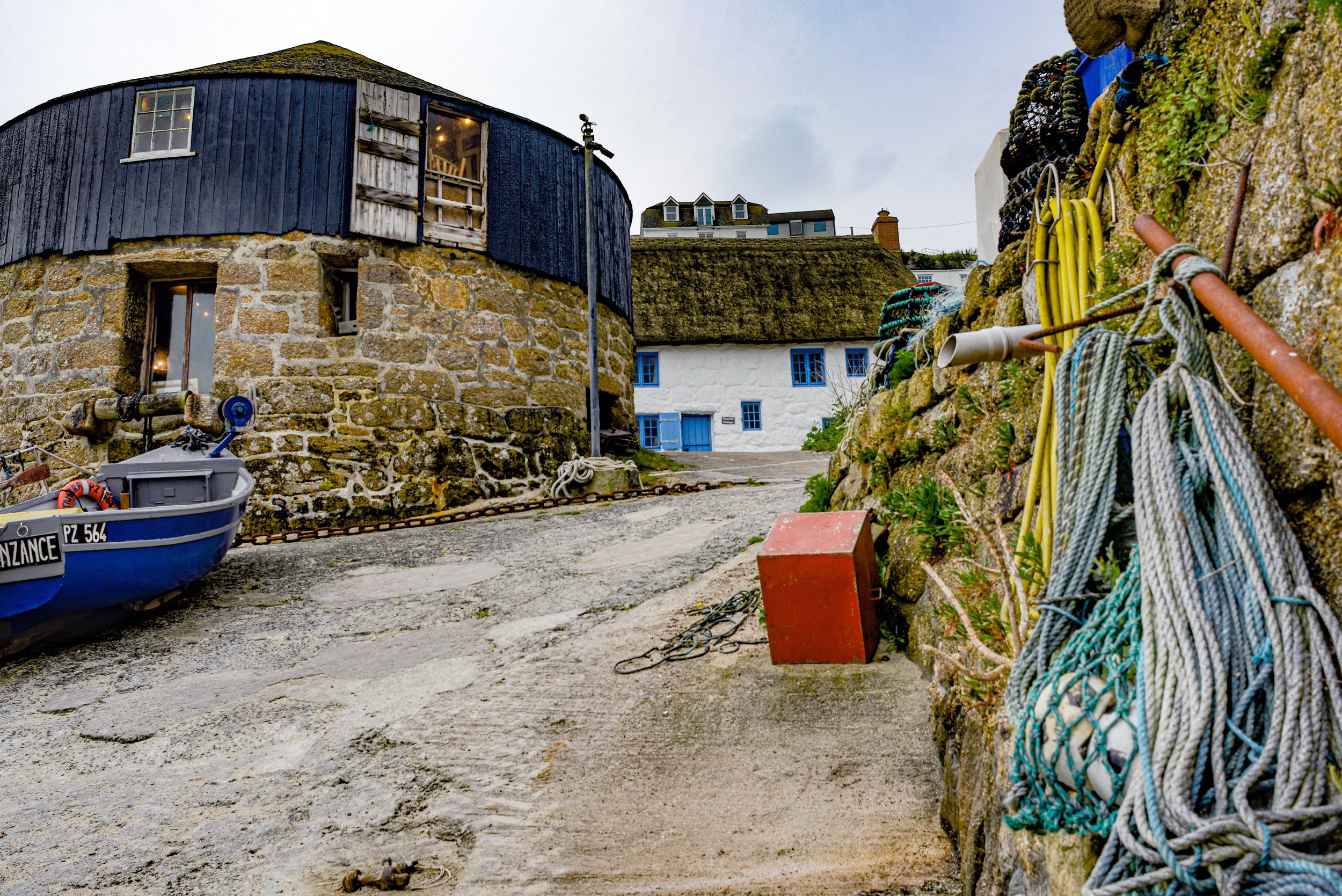
Sennen Cove
An isolated and independent community that for years made a precarious living from the sea. The old Lifeboat Station, proud of a heroic history was established in 1853. The stone pier in 1905. Whitewashed cottages and the Round House Gallery* line the front. It is a popular surfing centre. Look out for the Celtic Cross in the car park. Fishing trips. Inn.
